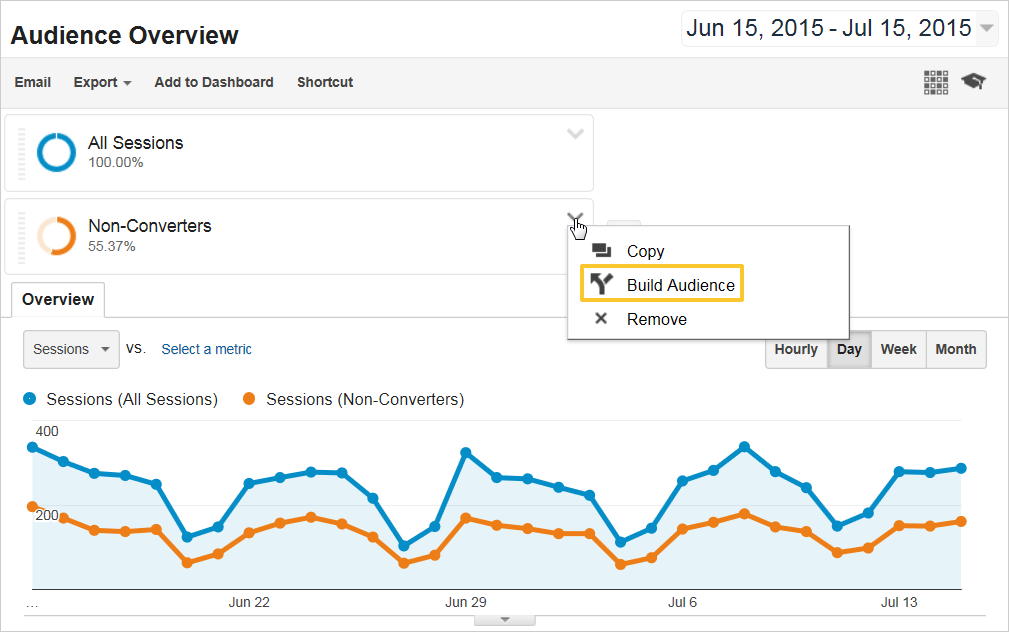Efficient Techniques for Remarketing In Google Analytics
Efficient Techniques for Remarketing In Google Analytics
Blog Article
Maximize Your ROI With Remarketing in Google Analytics
By harnessing the power of individual data and tailoring ads to certain audience sectors, services can substantially amplify their conversion rates. The trip to optimizing ROI with remarketing is a nuanced path led with insights and chances that can improve the trajectory of your advertising and marketing ventures.
Recognizing Remarketing in Google Analytics
Understanding remarketing in Google Analytics is vital for optimizing your digital advertising and marketing strategy. Remarketing enables you to target individuals who have previously seen your internet site or communicated with your app, offering them with tailored ads as they browse other websites or utilize other apps within the Google Display Network. This approach assists maintain your brand top of mind and encourages users to return to your website, eventually boosting the chance of conversion.
By making use of Google Analytics, you can track the performance of your remarketing projects, acquiring valuable understandings into customer habits, engagement, and conversions. This data enables you to improve your messaging, targeting, and bidding process strategies to improve the overall performance of your campaigns.
Furthermore, recognizing the various kinds of remarketing listings offered in Google Analytics, such as typical, vibrant, and comparable target markets, enables you to develop individualized and very segmented campaigns customized to specific customer segments. This degree of granularity can considerably boost the importance and influence of your remarketing initiatives, inevitably optimizing your return on financial investment.
Establishing Up Remarketing Listings
To efficiently execute remarketing projects in Google Analytics, the preliminary step involves configuring and developing remarketing listings targeting certain user segments based on their interactions with your site or app. By establishing up remarketing lists, you can customize your advertising and marketing initiatives to reach individuals that have currently shown passion in your solutions or items.
To begin, browse to the Admin section of your Google Analytics account and choose the Residential or commercial property where you want to create the remarketing checklist. After that, under the Property column, click on 'Audience Definitions' and pick 'Target markets.' Next off, click the red 'New Audience' switch and select 'Produce New' to specify the criteria for your remarketing checklist.

Crafting Efficient Remarketing Ads

When crafting your advertisements, concentrate on developing attention-grabbing headlines and compelling visuals that stand apart to prospective consumers. Integrate solid calls-to-action that encourage individuals to review your site and complete a desired activity. Make use of vibrant remarketing to reveal personalized ads featuring service or products that customers have previously viewed on your website.
Additionally, ensure that your ads are mobile-friendly considering that a considerable section web of web web traffic comes from mobile gadgets. Test various ad variants to identify which layouts and messages drive the finest results. By constantly refining and optimizing your remarketing ads based on performance data, you can maximize their efficiency and improve your return on financial investment.
Analyzing Remarketing Efficiency

With Google Analytics, marketing professionals can track the performance of their remarketing projects in real-time, enabling them to recognize patterns, patterns, and areas for improvement without delay. By examining the information, online marketers can determine which ads are doing well, which audience sectors are reacting positively, and which channels are driving the most conversions. This degree of granularity allows marketers to make data-driven choices to maximize their remarketing advocate far better results.
Maximizing ROI With Remarketing
Analyzing remarketing information in Google Analytics enables online marketers to pinpoint chances for enhancing roi (ROI) via calculated modifications - What Is “Remarketing” In Google Analytics?. To maximize ROI with remarketing, it is crucial to recognize the behavior of your audience. Discover More By analyzing individual interactions, such as the pages they saw, the items they saw, or the actions they tackled your site, you can customize your remarketing campaigns a lot more effectively
Segmenting your target market based on their behavior enables you to produce tailored and targeted advertisements that are most likely to reverberate with them. By showing pertinent ads to specific sectors of your audience, you can increase the opportunities of conversion and eventually improve your ROI.
Moreover, examining various advertisement creatives, messaging, and deals can help determine what reverberates finest with your target market. A/B screening permits you to explore different read review elements of your advertisements to identify what drives the highest possible engagement and conversion rates.
Conclusion
Finally, making the most of ROI with remarketing in Google Analytics calls for a strategic approach to evaluating customer actions, segmenting audiences, producing tailored ads, and optimizing project efficiency. By leveraging data-driven understandings and examining different strategies, businesses can improve their remarketing initiatives to drive higher interaction and conversion prices. This systematic method ensures that sources are successfully assigned towards optimizing rois in remarketing projects.
Next, click on the red 'New Audience' switch and choose 'Develop New' to specify the criteria for your remarketing list.
By constantly refining and maximizing your remarketing advertisements based on performance data, you can optimize their performance and enhance your return on investment.
By delving into these understandings, marketers can gain a detailed understanding of exactly how their remarketing efforts are resonating with their target audience and driving conversions. To maximize ROI with remarketing, it is important to comprehend the habits of your target market.In conclusion, taking full advantage of ROI with remarketing in Google Analytics requires a tactical approach to evaluating customer habits, segmenting audiences, developing tailored ads, and enhancing campaign efficiency.
Report this page